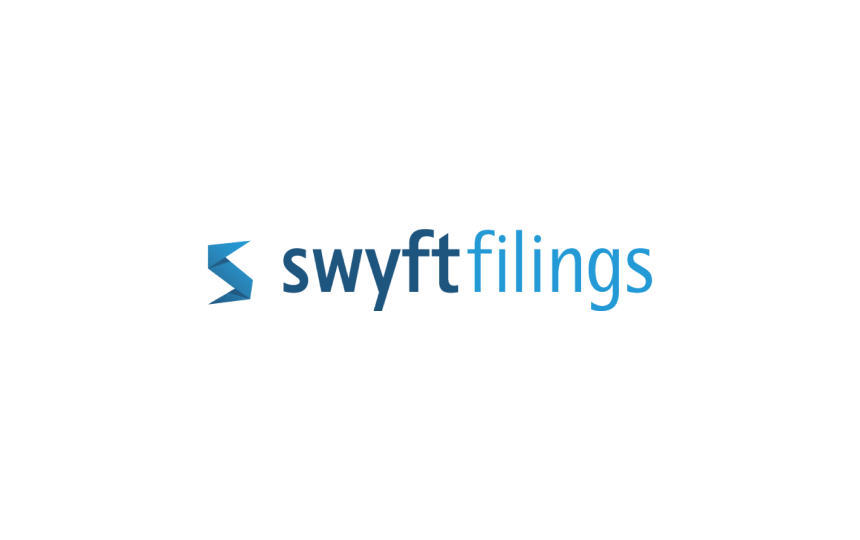Industry Report 2021
The annual Swyft Filings State of the Industry Report examines data from new business applications filed across the U.S. to understand how industries are faring.
The annual Swyft Filings State of the Industry Report examines data from new business applications filed across the U.S. to understand how industries are faring. Swyft Filings helps tens of thousands of companies with filing and compliance in all 50 states each year. This puts the company in a unique position to monitor which industries and states see the most significant volume of new business applications, and therefore have the most potential for growth, on a year-to-year basis.
Limited Liability Companies provide personal asset protection, shielding business owners from being personally liable for business debts. And unlike corporations, LLCs aren’t beholden to the same strict record keeping requirements as corporations.
There are multiple types of LLCs, such as foreign, member-managed, L3C, and single- or multiple-member managed LLCs. Swyft Filings can help you determine which business structure is best for your new business.
In our fourth annual report, we’ve included a breakdown of these findings, as well as factors that propelled or hindered the growth of potential new businesses in 2021. Not surprisingly, the COVID-19 pandemic disrupted the way industries traditionally functioned over the last two years and pressured them to either adapt and thrive or struggle to survive.
Digital transformation was a huge trend that impacted several industries and sectors we reviewed in this report. As domestic travel and life outside of the home came to a halt at the start of the pandemic, a greater reliance on e-commerce, automated services, and fast delivery certainly affected growth trends in 2021 and will continue to remain relevant well into the future.
Newer pandemic-related trends that affected industries and business filing growth in 2021 include the global supply chain crisis and ongoing labor shortages. In 2021, businesses had to — and will need to continue to — place investments in technology and adapt to rapidly changing worldviews to stay competitive within their respective industries.
Leadership and experts across multiple industries, including healthcare, restaurants, manufacturing, and more, agree uncertainty and volatility will remain top business challenges in 2022. However, these experts also agree there is opportunity for pandemic-induced changes to become “permanent competitive advantages.” In the coming year, Swyft Filings predicts business growth will rely heavily on how well each sector can continue to pivot and embrace COVID-19 induced trends that may be here to stay.
In our fourth annual Swyft Filings State of the Industry Report, we’re taking a look at the Growth Rank and Volume Rank of each industry tracked in the Swyft Filings database, as well as industry growth in U.S. states with the largest volume of new business filings in 2021.
Here’s how each metric breaks down in this report:
Year-over-year Growth %: Percent change in new business filings in 2021 vs. the number of new business filings in 2020.
Growth Rank: #1 has the largest percent increase in new business filings in 2021 compared to 2020.
Volume Rank: The overall volume of new business filings in 2021 (#1 having the largest volume of new filings).
Warehousing
Growth Rank:#1 (46.43%) Volume Rank:#18
In 2021, the volume of new business applications in the warehousing industry was the lowest compared with other sectors tracked in the Swyft Filings database. Despite this, the industry saw the strongest year-over-year growth of new business applications, ranking first for Growth Rank with a 46.43% increase.E-commerce contributed significantly to this growth as options to shop online became increasingly popular since the pandemic started. For example, B2B sales alone are expected to increase 17.50% per year through 2027.The warehouse industry enjoyed steady growth well before the pandemic, but warehouses have seen an increased demand for service and delivery as COVID-19 spikes have stores placing larger orders for groceries, pharmaceutical items, household products, and more. With more e-commerce and residential shipments from retailers like Amazon, there has been a need to establish warehouses and fulfillment centers closer to set populations to meet quick delivery times for these products.
2.Transportation
Growth Rank:#2 (31.92%) Volume Rank:#2
After coming in 13th in Growth Rank in 2019, the transportation industry has seen consistent gains over the past two years. In both 2020 and 2021, the transportation industry secured the second spot in Growth Rank. In 2021, it was also second in volume of new business applications, just behind retail.In particular, the freight industry has expanded rapidly over the past two years, with e-commerce playing an integral role in the heightened demand. Fast fashion and other e-commerce sectors heavily rely on the transportation industry to get consumers their goods quickly. As online shopping continues to boom year-over-year, this growth goes hand-in-hand with the elevated demand for transportation services.A 2021 industry report predicted the transportation sector will reach a value of $7.8 trillion by 2027. With this growth, increased tracking technologies will bolster efficiency through automation and new logistical tools.
3.Rental & Leasing
Growth Rank:#3 (26.85%)Volume Rank:#11
With a 26.85% increase in new business applications in 2021, the retail and leasing industry ranked third for year-over-year growth and 11th for the volume of new business filings in 2021.While the total volume of new business formations in the rental and leasing industry is relatively modest compared to other industries tracked in the Swyft Filings database, the industry has grown exponentially through 2021 and will likely continue to increase.The rental car sector certainly had a significant impact on the rental and leasing industry’s growth in 2021. According to the Washington Post, more than 77,000 cars were sold by car rental providers in 2020 as the pandemic cut the need for domestic travel in the U.S. However, as the demand for travel increased just one year later as more Americans became vaccinated, the limited supply of cars caused prices to skyrocket. Based on Auto Rental News data, the U.S. car rental industry had $28.1 billion in overall revenue for 2021, about a 21% gain over 2020.
4.Insurance
Growth Rank:#4 (24.37%) Volume Rank:#17
After ranking 18th in growth in 2020, the insurance industry saw significant improvement in 2021. While insurance came in second to last in volume of new business applications tracked by Swyft Filings, it saw a 24.37% increase in applications submitted year-over-year.Deloitte attributed much of the industry’s overall growth in 2021 to insurance carriers reaping the exponential benefits of the technological investments and operational efficiencies they were forced to make to adapt to the pandemic in 2020. Because insurance providers had to become more agile in the wake of COVID-19, they had operations in place in 2021 that allowed them to be more flexible, efficient, and customer-centric. And this growth likely opened the door for new business formation opportunities throughout the year.Moving forward in 2022, accelerating digital initiatives will be vital to maintain steady progress. According to Deloitte, striking a balance between automation and maintaining a human touch with consumers will be among insurance businesses’ top priorities.
5. Accommodations
Growth Rank:#5 (+15.21%) Volume Rank:#16
Despite seeing 96.82% year-over-year growth and ranking third in Growth Rank in 2020, the accommodations industry was slower to expand in 2021, ranking 16th in volume of new business applications filed via Swyft Filings. New business applications were relatively flat in 2021 but significantly behind other industries.Accommodation businesses, such as hotels, hostels, and vacation rental property management, faced numerous challenges this year, including a resurgence and new strains of COVID-19, a slow vaccine rollout, and workforce shortages. Historical lows in property loans, coupled with a variety of grants given out in 2020, likely spurred an increase in new accommodation-related business applications in 2021. However, the industry continued to take a hard hit in actual revenues and overall performance last year.With 63.50% of the U.S. population fully vaccinated as of January 2022, CNBC Travel predicted consumer demand in the travel and tourism industry will make a major comeback in the coming year. Moving forward, new accommodations-based businesses must keep up with digital trends that meet consumer safety and convenience demands and help close some of the industry’s labor gaps.
6.Food Service
Growth Rank:#6 (10.94%) Volume Rank:#7
The food service industry saw a 10.94% year-over-year increase in new business applications, ranking sixth for growth and seventh for overall volume of filings.Despite obvious challenges traditional restaurants and food providers have faced in the last two years, Swyft Filings observed year-over-year growth among new food service business applications in both 2020 and 2021. Admittedly, year-over-year growth slowed a bit in 2021 at 10.94% compared with a robust 68.60% in 2020, but both years of growth were likely influenced by industry transformations forced by the pandemic.For example, according to NDP, food service digital orders grew by more than 124% in March 2021 compared with 2020. Orders for carry-out and delivery also increased across the board. This rising demand for quality digital ordering and delivery systems means more opportunities for new, innovative companies to step in.At the same time, we can’t overlook the supply chain crisis and labor shortage issues that struck the industry in 2021. According to the Federal Reserve, these two overarching trends likely contributed to the slower year-over-year growth last year and will be an ongoing issue well into 2022. However, as we saw with digital ordering and delivery, these challenges offer the industry a chance to adapt, innovate, and improve, which means more opportunities for new business growth.
7.Real Estate
Growth Rank:#7 (6.65%) Volume Rank:#5
After ranking 17th in Growth Rank in 2020, the real estate industry came in seventh, with new business applications growing by 6.65% in 2021. The industry has seen historically high demand recently, with home sales on track to reach the highest level in 15 years and an estimated 6 million homes sold in 2021.Record-low mortgage rates and fierce buying competition were major contributors to the real estate industry’s big year and likely contributed to the growth Swyft Filings saw in new business filings.Experts predict that 2022 will continue to be a seller’s market, with scarce availability and elevated prices. In turn, the rental space will also see increased demand for rental units, which will likely drive up rent nationwide, according to Realtor.com.
8.Finance
Growth Rank:#8 (5.52%) Volume Rank:#14
Coming in at number eight, finance ranked in the top half of industries tracked by Swyft Filings for new business application growth in 2021.One of the biggest trends that impacted the industry throughout the year was digitization, which provided ample opportunity for new business growth. In addition to mainstream consumer trends like mobile banking and online payment options taking center stage, an industry-wide focus on data analytics tools and artificial intelligence likely helped spur year-over-year growth in new finance business filings.Another sector of major growth within the finance industry that cannot be overlooked is cryptocurrency. According to iCapital, the cryptocurrency market had a breakout year in 2021, surpassing $2.2 trillion in market capitalization and is expected to continue growing.
9.Wholesale
Growth Rank:#9 (1.72%) Volume Rank:#13
According to Swyft Filings’ data, the wholesale industry ranked in the top 10 for year-over-year growth in 2021 and has maintained a Volume Rank of 13 for the third year in a row. However, growth within the industry is considerably lower than what it has seen over the last few years.The expectation for fast delivery during the pandemic has led manufacturers to skip the traditional business model and start selling directly to consumers. Direct-to-consumer sales grew 45.50% in 2020. This puts wholesalers at risk, as the wholesale industry now has its own customers as competitors to take into account. Although this change impacts growth rate, experts still predict that the industry will continue to expand moving forward, from the current market value of $49,371.76 billion to $64,334.41 billion by 2025.
10.Construction
Growth Rank:#10 (-0.48%) Volume Rank:#3
Despite a slight decline in year-over-year growth, the construction industry ranked third in largest volume of new business applications. 2020 was a prosperous year for new business filings in this industry, which saw 96.28% year-over-year growth. This extreme growth made 2020 a hard year to top and resulted in a lower Growth Rank for the industry in 2021, despite being at the top of the pack for Volume Rank.Trends contributing to slower year-over-year growth in the construction industry include labor shortages, high material prices, and ongoing supply chain issues. Overall, 2021 presented some unique challenges for the construction industry, so it’s not surprising to see new business application growth slow after the incredible boom of 2020.Regardless of the challenges faced by the industry through 2021, consumer demand for construction-based goods and services was high amid additional discretionary household income and a heightened interest in home improvement and renovation projects. Harvard’s Joint Center for Housing Studies expects home spending to rise by 9% in 2022, despite elevated prices and industry delays. So while new business filings slowed in 2021, the future is still very bright for the construction industry.
11.Manufacturing
Growth Rank:#11 (-1.14%) Volume Rank:#15
Overall, 2021 was a stagnant year for manufacturing in terms of new business applications. The industry came in 15th for Volume Rank and saw a 1.14% year-over-year decrease in the number of new business filings submitted via Swyft Filings.In 2021, the manufacturing industry faced a historic labor force shortage and will continue confronting this issue for the foreseeable future. According to Simutech Multimedia, the U.S. manufacturing industry will have 700,000 job orders within the next five years, but fewer graduates are pursuing the career. The Manufacturing Institute reports that about 2.4 million jobs in the manufacturing industry will remain unfilled by 2028 if no action is taken to address this skill gap, which would lead to a loss of 11% in yearly income for the average manufacturer.Manufacturers were also dealing with increased costs, unstable supply chains, and challenges meeting high demand. As demand outpaced available supply, the cost for raw materials and transporting goods increased, leading to slower deliveries that will likely continue in 2022.Deloitte’s 2022 industry outlook expects manufacturing to build back up despite these challenges, thanks to the rollout of vaccinations and continued demand. However, the industry’s survival depends on how well it adopts technological advancements, reorganizes the supply chain, and builds a sustainable workforce with the required skillsets.
12.Retail
Growth Rank:#12 (-2.03%) Volume Rank:#1
Retail slightly dropped in year-over-year growth in 2021, but only because of its unprecedented growth the year prior. In 2020, the number of new business applications submitted for the retail industry grew by 108.38%, the highest percent increase observed in the industry in the history of the Swyft Filings State of the Industry Report. This extreme growth made 2020 a difficult year to top, which explains the dip in overall Growth Rank, but with a Volume Rank of 1 in 2021, the retail industry is definitely booming.According to the National Retail Federation, retail is growing at a level not seen in more than 15 years. The massive transition to e-commerce spurred on by the pandemic helps explain the sudden growth within the industry. For example, shoppers now make 43% of their monthly retail purchases online, and 88% of retailers sell online to meet those needs.Retail Dive reports that 58% of revenue among retailers currently comes from online sales, making it clear that going digital has become a minimum requirement to guarantee success in the retail industry.
13.Entertainment
Growth Rank:#13 (-3.57%) Volume Rank:#6
After seeing substantial new business application growth in 2020, the entertainment industry declined by 3.57% in 2021, coming in 13th in overall Growth Rank. Despite theatrical and out-of-home entertainment taking a major hit in 2020 (losing $30 billion worldwide), at-home, digital entertainment was more important than ever. Sectors like gaming and streaming were top performers throughout 2020, with music streaming alone accounting for 83% of the record industry’s revenues. Additionally, 78% of households reported having a subscription to a top streaming service.All of this means that 2021 had big shoes to fill compared with 2020, the year that first forced the whole world to stay home and caused an industry-disrupting digital transformation. With this in mind, it’s unsurprising to see a shaky year of new business application growth within entertainment.Looking at 2021, digital options like gaming and streaming continued to carry the entertainment industry, while other sectors that once dominated took a hard hit. The notable decline in the movie theater industry is a prime example of the impact of digitization in a market that once thrived before COVID-19. According to Quorum research, about 49 percent of prepandemic moviegoers are no longer returning to the box office as of 2021. This demonstrates how the pandemic accelerated the decline of movie theaters in favor of streaming options like Disney+ and HBO Max.As the entertainment industry continues to adjust to the major disruptions caused by the COVID-19 pandemic, Statista predicts the industry will redeem itself over the next several years. Streaming video-on-demand (SVOD) will likely remain the highest performing sector, but live entertainment is expected to make a comeback.
Professional
Growth Rank:#14 (-4.46%) Volume Rank:#8
Professional services encompass jobs that require special training in the arts or sciences, including engineers, lawyers, and architects. Although the professional services industry continues to rank in the top 10 for sheer volume of new businesses filed compared with other industries, growth in this sector declined 4.46% year-over-year in 2021.Digital transformation as the solution for continued growth is not a new concept, but COVID-19 sped the need for innovation and new technology by several years. According to Gallup, almost one year into the pandemic, a majority of U.S. workers were working remotely part-time or full-time, which required professional services to embrace new technology at a faster rate than it experienced in past years.A Salesforce report revealed that 88% of businesses surveyed already acknowledged that their digital transformations have accelerated since 2019. To stay competitive over the long term and continue to see growth, professional firms will need to keep up with tech-savvy solutions for a more efficient employee and client experience.
15.Technology
Growth Rank:#15 (-8.34%) Volume Rank:#10
Coming in at 15th in Growth Rank and experiencing an 8.34% decline in new business applications filed through Swyft Filings, the technology industry surprisingly lagged behind in 2021.While the technology space is responsible for decades of innovation and growth, corporate giants like Apple and Microsoft make the industry an extremely competitive one to enter. Technology startups also have some of the highest failure rates in the country (around 63%), largely because of tough competition and rapid changes in tech. However, general industry trends show businesses’ demand for outsourcing their technology needs increasing by 11% in 2022.
16.Social Assistance
Growth Rank:#16 (-8.50%) Volume Rank:#12
After coming in eighth in Growth Rank in 2020, the social assistance industry fell to position 16 in 2021. The industry also experienced an 8.50% drop in new business applications tracked by Swyft Filings.These declines may be related to the steady stream of human service professionals who have left their roles during the pandemic. Turnover in this industry has increased by 35% compared to prepandemic. This and emergency-level job vacancy rates as high as 60% are among the top reasons the industry fell short this year.Despite this scarcity of workers, the demand for social assistance services continues to soar. In particular, behavioral health services are a key driver of this heightened demand, with mental health services a top priority for consumers amid the COVID-19 pandemic.
17.Health Care
Growth Rank:#17 (-11.33%) Volume Rank:#9
Coming in second-to-last in Growth Rank and dropping 11.33% in year-over-year growth, new business applications in the healthcare industry lagged in 2021. The COVID-19 pandemic has had a substantial impact on both public and private healthcare, sparking major long-term changes to the industry’s structure.Given the volatile state of healthcare over the past two years, worker shortages reached historic highs in 2021. Becker’s Hospital Review found that 1 in 5 healthcare professionals have left the industry since the start of the pandemic, and 12% have been laid off. Further, 27% of U.S. adults delayed annual medical appointments as of February 2021.Despite an unprecedented year, the industry has continued to persevere as advancements in medicine and virtual care evolved exponentially in 2021. Looking ahead, improvements in behavioral healthcare, health equity, and telemedicine are the top trends expected to drive new growth for the industry.
18.Consulting
Growth Rank:#18 (-15.76%) Volume Rank:#4
Although consulting ranks fourth for the volume of new business applications submitted in 2021, this industry ranked last for growth year-over-year.The consulting industry was hit hard by the pandemic in 2020 and has seen slower year-over-year growth in new business filings since. In early 2021, industry professionals agreed the pandemic “caused heavy turmoil” as consultants faced increased pressure from clients to find new, sustainable ways to save money. Additionally, client loyalty was historically low, leading consultants to reduce prices, offer contract reviews, and anticipate canceled projects.Moving forward, consultants offering both onsite and virtual services will have a crucial advantage gaining clients in most industries. Embracingdigital marketing will be key to beating out competitors and maintaining client satisfaction in the future.
Swyft Blog
Everything you need to know about starting your business.
Each and every one of our customers is assigned a personal Business Specialist. You have their direct phone number and email. Have questions? Just call your personal Business Specialist. No need to wait in a pool of phone calls.










